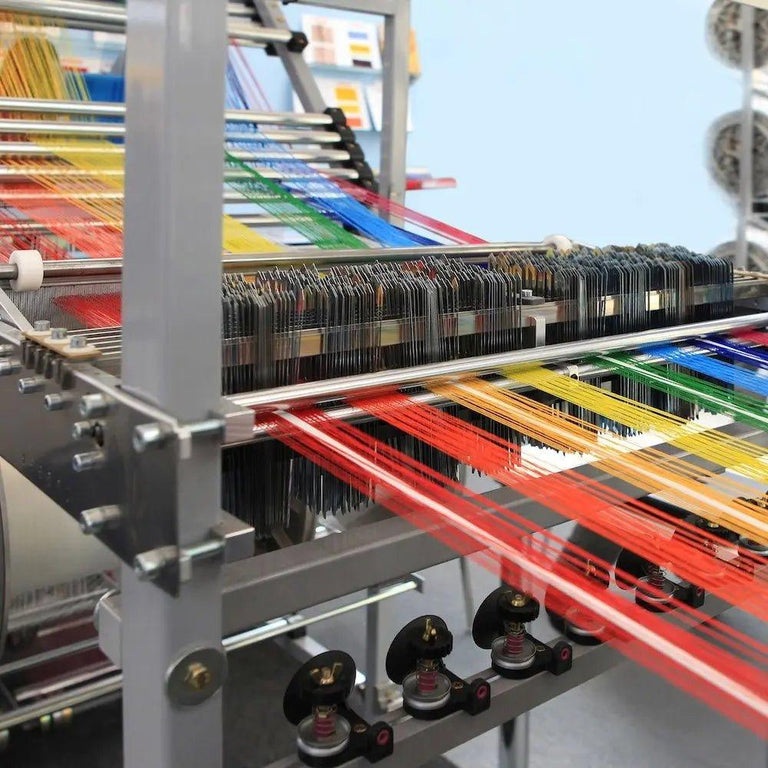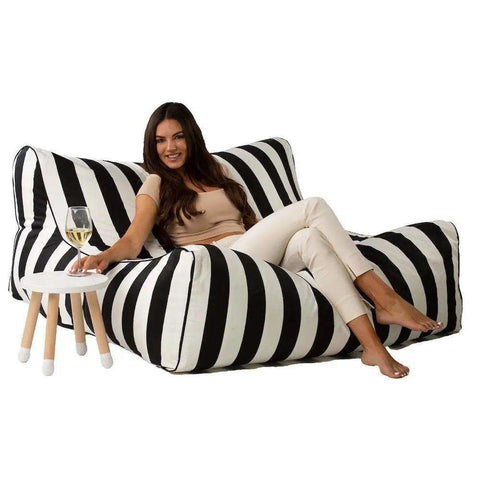Polyurethane is a type of polymer, a synthetic compound made from petroleum, derived from petroleum or other sources. PU coating on fabric is used to enhance the fabric’s lifespan by providing water resistance, abrasion resistance, and increased tensile strength. This protective coat enhances the fabric's resistance to water and abrasion.
Commonly known as “poly-coating,” PU coating is polyurethane applied to the surface of a fabric. Polyurethane is a type of polymer, a synthetic compound made from petroleum residue. PU coating on fabric is an excellent way to ensure the material doesn’t get ruined. Applied to fabrics such as polyester, nylon, cotton, and leather, it acts as a protective film, typically on one side of the material. The resulting material is known as a coated fabric, which offers improved waterproofness, durability, and resistance to mould and mildew.
Fabrics with PU coating are more lightweight, water-resistant, and flexible. The protective PU coating can be single-coated (on one side) or multi-coated (on both sides). Polyurethane is often applied to polyester, typically through heat lamination. Industries such as pharmaceutical, diaper, activewear, and pet product companies all use polyurethane fabrics. Modern techniques, such as microporous coating, allow PU coatings to create breathable fabrics. The production of PU coatings involves manufacturing from petroleum-based resources, and fabrics are treated with these coatings to enhance their performance characteristics.
Properties of Polyurethane
Polyurethane fabrics are breathable and lightweight. Clothing with PU coating retains its properties even after 100+ washes and dries. Originally intended for hospitals, PU coating provides durable, waterproof materials for bedding and scrubs—essential in environments where strong, waterproof fabrics are a must. The protective properties of polyurethane coatings make them ideal for applications like tent floors, which are often exposed to heavy loads, moisture, and environmental stressors.
PU coating on fabric can be manufactured in various thicknesses, making it versatile for a range of applications. Diapers use thinner coatings compared to camping gear, but the material remains durable and waterproof. However, over time, even PU coatings can develop leaks if the coating is damaged or degrades, allowing water to penetrate the fabric when the protective layer is compromised. Polyurethane fabric can also be fire-retardant, airtight, and resistant to abrasion and humidity, making it suitable for many applications. It’s often applied to only one side of the material. Polyurethane-coated fabrics are popular for creating accessories such as backpacks and tents due to their exceptional durability. In these applications, properly constructed seams are critical, and they are often sealed to prevent water ingress and ensure long-term waterproofness.
PU Fabric
Polyurethane fabric closely imitates leather, especially when gathered or stitched. Unlike vinyl, PU coating includes resins that don’t need plasticisers, resulting in a softer polymer that resists cracking and splitting. PU and PUL fabrics are renowned for their softness and flexibility, making them comfortable and easy to move in.
Polyurethane fabrics are preferred for furnishings due to their durability and ease of decoration. A significant advantage is that PU coating is a greener option than vinyl, as it doesn’t create dioxins. While more expensive than vinyl, it’s cheaper than real leather.
About Polyurethane Resin Systems
All fabrics coated with polyurethane contain polymer resins. The three main types of resins in PU coating include:
-
Polycarbonate (PC): Durable with high heat and light resistance, suitable for commercial upholstery in buses, trains, and aeroplanes.
-
Polyester (PES): Ideal for low-activity commercial applications like headboards and pillows, but has low resistance to heat, light, and humidity.
-
Polyether (PET): Excellent resistance to humidity, light, and heat, making it suitable for many commercial applications.
These resins can be used individually or in combination with each other. The cost varies depending on the quality of the resin. The choice of resin and the thickness of the coating can also impact the weight of the finished fabric, which affects its portability and suitability for applications such as ultralight outdoor gear, tents, and apparel.
Performance additives are also required to ensure that the polyurethane fabric is safe and ready for commercial use. PU coating on cloth is known for its colour-fastness and stain resistance. Adding new chemicals can enhance its resistance to abrasion and flames.
PU Coating On Fabric - The Manufacturing Process
There are two primary processes for manufacturing polyurethane-coated fabrics: the wet and dry processes. Understanding the details of the PU coating manufacturing process is crucial for ensuring the quality and performance of outdoor clothing.
Wet Polyurethane Process
The wet process involves coating a coagulated base on a substrate backing. It uses resin system combinations with adhesive layers applied to the bottom and top. Topcoats are colored and designed. This process is mainly used in upholstery today.
Dry Polyurethane Process
The dry method doesn't use a coagulant base. The polyurethane adheres directly to the face of the backing, facilitating a chemical reaction that enhances its strength and performance. Two resin systems are used: solid polycarbonate and polyether-polycarbonate. Higher-quality resins are processed in more environmentally friendly environments, with nearly 100% of solvents recaptured and recycled. The drying process also uses 25% less energy than the wet process.
UV Resistance and Benefits of PU Coating
Polyurethane (PU) coating is renowned for its exceptional UV resistance, making it a top choice for fabrics used in outdoor environments. When applied as a protective film, the polyurethane coating forms a barrier that shields the base fabric from the damaging effects of sunlight. This means that PU-coated fabrics experience greatly reduced fading, discolouration, and degradation, even after prolonged exposure to UV rays. As a result, products like tents, canopies, and tarps maintain their appearance and performance for much longer than untreated materials.
The secret behind this UV resistance lies in the unique properties of polyurethane. The coating absorbs and dissipates ultraviolet radiation, preventing it from penetrating and breaking down the fibres of the fabric. This characteristic not only enhances the material's durability but also ensures that the fabric remains flexible, breathable, and lightweight—qualities essential for outdoor gear. Additionally, PU-coated fabrics are resistant to moisture, abrasion, and dirt, providing comprehensive protection in a wide range of weather conditions.
For the outdoor industry, the benefits of PU coating are significant. Manufacturers rely on PU-coated fabrics to produce high-performance products that can withstand harsh environments, from intense sunlight to heavy rain. The coating process enables the creation of lighter and more flexible materials without compromising strength or waterproof properties. This makes PU-coated fabrics ideal for use in tents, tarps, canopies, and outdoor clothing, where both protection and comfort are crucial.
Applying a layer of polyurethane to the base fabric is a cost-effective and efficient way to enhance the fabric’s performance. The process can be tailored to different needs, ensuring that the final material offers the right balance of UV resistance, breathability, and durability. Additionally, PU-coated fabrics are easy to maintain, as the protective film helps repel dirt and moisture, making cleaning and storage simple.
In summary, PU coating delivers outstanding UV resistance and a host of other benefits that make it indispensable in the outdoor industry. Whether for tents, canopies, or technical outdoor apparel, PU-coated fabrics offer long-lasting protection, enhanced performance, and reliable durability, ensuring that both manufacturers and consumers can trust their gear to withstand the elements.
PU Coating On Fabric: Things To Consider
There are many benefits to using PU coating on fabric. Here are some key advantages:
However, it's important to note that PU coatings can become sticky and tacky if they degrade due to improper care or prolonged exposure to moisture.
Environmentally Friendly
The dry process for polyurethane is an environmentally friendly option. Polyurethane fabric doesn't use solvents and doesn't produce harmful toxins. Unlike materials like PVC, polyurethane is a strong, durable, waterproof, and heat-resistant material. PU ensures a reduction in waste and is ideal for products like life vests.
Easy To Clean
Polyurethane fabric is one of the most durable materials for furnishings. Its ability to block moisture makes it easy to clean. Stains can be removed with soap and water. Diluted bleach or other spirits can be used on solvent-resistant blends. Avoid harsh chemicals like acetone or vinegar, as they can damage the material. Always follow the care instructions on the label to avoid ruining the fabric blend.
The History of Polyurethane Application
Here's a timeline of the history of polyurethane fabric:
1937
Dr. Otto Bayer discovered the basic polyurethane chemistry at the IG Farben Laboratories.
The 1940s
Polyurethane began replacing rubber and was used for paper impregnation and in the manufacture of mustard gas-resistant clothing. It was also used in high-gloss aeroplane finishes. In 1948, DuPont Corporation made polyurethane commercially available as a rigid foam for beer barrel insulation.
The 1950s
Synthetic polyurethane leather was first used in sneaker soles. Foam seat cushions began in Europe and then in the US, with flexible polyurethane foam becoming the material of choice for car seats and furniture upholstery.
The 1960s
DuPont used polyurethane in clothing, rebranding Spandex fibers into Lycra for swimwear. In 1969, Bayer AG Corporation introduced polyurethane to the all-plastic car in Germany.
The 1970s
Cyclists use a PU coating on fabric for improved aerodynamics. Spandex shorts became popular as versatile exercise clothing. In the late 1970s, polyurethane was used as a spray for building insulation due to rising energy costs.
The 1980s
Spandex was popular in hosiery and everyday wear, such as leggings and Chanel skirts. Polyurethane foams were used in automobiles for passenger safety.
The 1990s
Polyurethane was used in thin-wall medical hoses, such as catheters, due to its environmental benefits.
The 2000s
Industries shifted towards more environmentally friendly practices. Polyurethanes were made from vegetable oil polyols, such as those derived from soy, which are used in soy-based polyurethane, as seen in Ford's products. Rimowa introduced the first polycarbonate suitcase, which was lighter than aluminium options.
The 2010s
The Mitchell Group introduced Sta-Kleen, the first dry-erase ink and stain-resistant PU upholstery fabric. In 2017, they introduced Sta-Kleen Polycarbonate, a polyurethane made from 100% PC resins. Polyurethane accounted for $1.1 billion in sales in the US in 2016 and is a primary material for pet-related products, beanbags, canopies, life vests, and boats. The diaper industry also utilises polyurethane fabrics as an alternative to disposable options.




